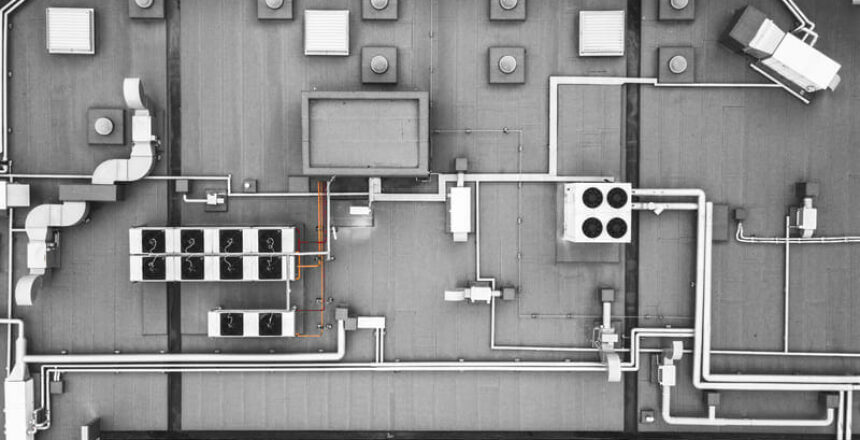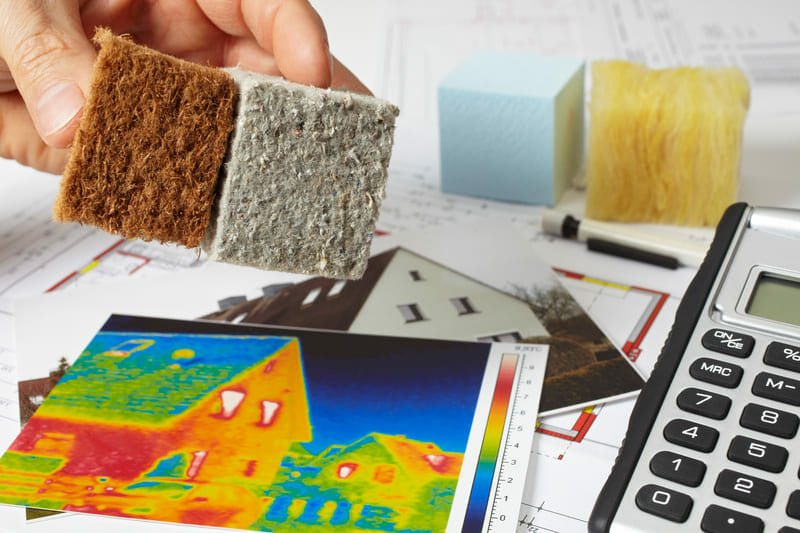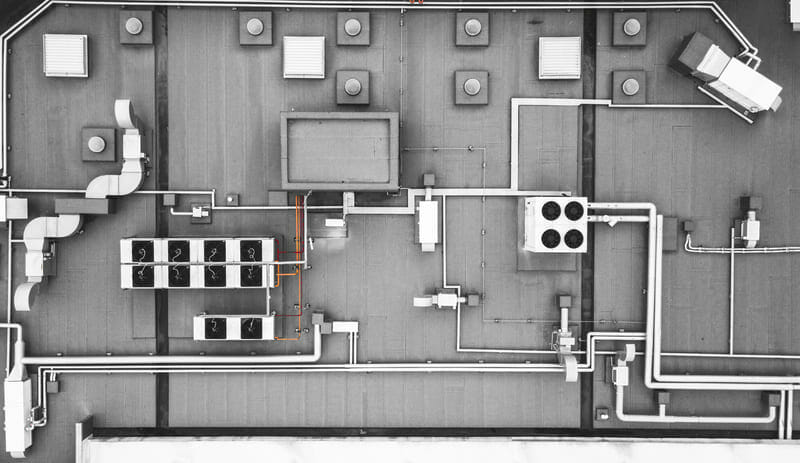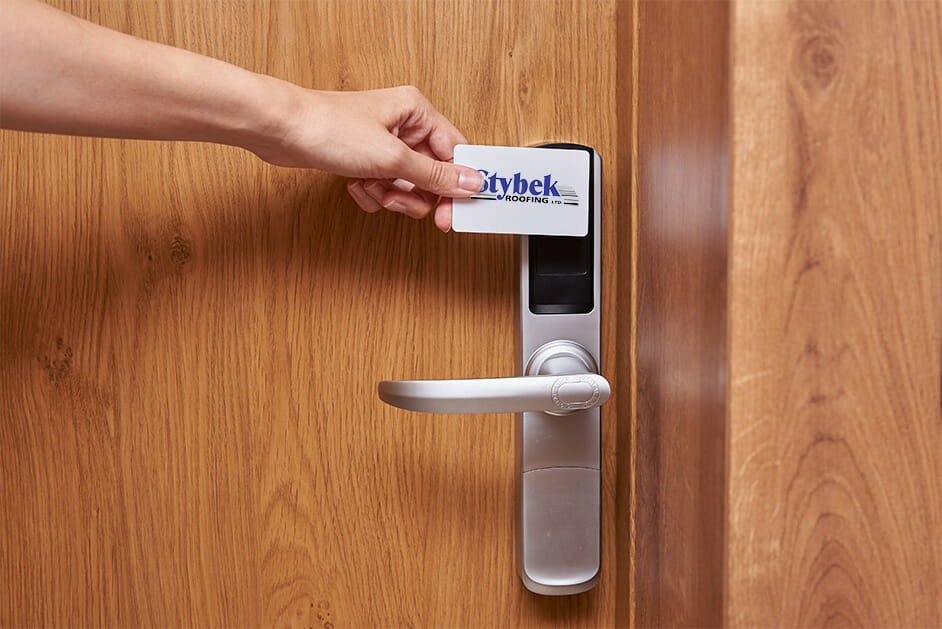What do a commercial roofing company and a used car salesman have in common?
Nothing, actually. But that’s not always the perception.
In my experience, when you suggest a roof inspection to a business owner, reactions can be mixed. While some tell you to go ahead, others are suspicious. They haven’t noticed any water leaks or pest invasions, so they assume you’re trying to sell them something they don’t need.
Enter the ‘used salesman’ comparison.
The problem here is that quite often they DO need a roof inspection and maybe even repairs. They just don’t know it until the next torrential rainstorm breaks through and floods everything. Then they call a commercial roofer in a panic, pay for expensive repairs, and deal with the stress of insurance claims and cleanup.
If you own a business, its roof is one of your most valuable assets. When it’s in good shape, it keeps out bad weather, protects your employees and inventory, and keeps energy costs down. When there’s damage to the membranes, decking, vents, flashing, or gutter, the result can be so catastrophic that some businesses never recover.
This guide covers everything you need to know about commercial roofing, including:
- How it differs from residential roofing
- Popular commercial roofing types (and how to pick the right one for your business)
- How commercial roofing is installed
- What you can expect during a commercial roofing inspection
- How to find a reputable commercial roofing company that genuinely cares about your business
Commercial Roofing vs. Residential Roofing
Like residential roofing, the main purpose of a commercial roof is to protect a property and its users, but they’re not the same type of construction.
The most significant difference between commercial and residential roofing systems is the roof’s slope which is determined by the building’s size. Houses tend to be smaller, so they have a steep roof that can be seen from the ground and is often built with materials such as tile, shingles, and slate. Because commercial buildings are typically larger, they tend to have a flat roof or one that is slightly sloped and therefore invisible from the ground.
In addition:
- When it comes to installation, commercial roofing is generally more complicated than its residential counterpart. While homes rarely have obstacles other than chimneys, most business roofs are equipped with HVAC units, smoke stacks, and/or external piping. An extra degree of skill is usually required to build a roof that meets the strength and load-bearing demands of these commercial structures.
- Commercial roofs come in a wide range of materials which are determined by the structure of the building and other factors like climatic conditions, e.g., intense heat, extreme cold, or if a surface needs to withstand high foot traffic.
Typical commercial roofing systems include single-ply (EPDM, PVC, TPO), modified bitumen, built-up roofing systems, and more. As there are more options for commercial roofing systems than for residential roofs, you want to work with a contractor that understands all of them and knows how to choose the right one for your building’s size, age, and energy efficiency goals.
Types of Commercial Roofing Systems
With so many options available, deciding which commercial roof type is best for your business is more difficult than ever, but a reputable roofing company can help you make the right decision for your building and location.
Built-Up Roofing or BUR Membrane
BUR roofs, also known as built-up roofs, are the standard tar and gravel roof systems. Composed of multiple alternating layers of tar and gravel, they are durable, UV-resistant, and can be coated to prevent heat from soaking in. While they support foot traffic quite well, they rely on a stable and strong understructure to support the weight and movement vibrations.
On the downside, BUR roofing can give off a strong smell during hot weather, so roofing work should be scheduled when the building is unoccupied. Materials should be staged downwind of the building and away from vents and air intakes.
Metal Roofing
Metal roofing is popular because of its 40 to 60-year lifespan. They are available in a variety of materials, including metal tile sheets, galvanized steel, stainless steel, coated steel, silicon-coated steel, copper, aluminum, zinc, tin, and more. There are even some varieties that come with integrated solar or snow removal systems.
Metal roofing systems have an attractive, finished look, are fire-resistant, and can be stronger and more sustainable than many other commercial roof systems. Although metal can be susceptible to corrosion, modern installations include protective surface layers to minimize damage from exposure and environmental factors such as pollution and moisture.
Modified Bitumen Roofing
Modified bitumen roofing consists of reinforced roof fabrics and multiple layers of hot bitumen. To ensure maximum stability and protection, these roofs are two-ply systems. This type of roof system is typically easier to maintain and has greater tensile strength than other commercial flat roof systems. If you anticipate a lot of activity on the roof, such as HVAC repairs and installations, this roofing system may be the best option for your location.
EPDM or Thermoset Roof Membrane
EPDM (Ethylene Propylene Diene Terpolymer) is a roll-based, highly durable synthetic rubber roofing membrane. Also known as Thermoset roofing, it consists of a single-ply rubber material, is easy to install, and has a strong resistance to ozone and ultraviolet light.
Besides being resistant to many solvents, acids, and alcohols, EPDM roofs also provide flexibility in cold temperatures and have reflective properties that reduce cooling expenses. On the downside, it can puncture more easily than some other commercial roofing materials, which can be a concern if you have people walking on the roof frequently or debris is often blown or dropped onto the surface. If stone ballast is used with the system, it also may be more challenging to find the source of roof leaks.
Thermoplastic or PVC and TPO Roof Membrane
Thermoplastic Polyolefin (TPO) and Poly Vinyl Chloride (PVC) roofs are lightweight, UV-resistant, reflective, and resist damage due to punctures and certain chemicals. Other advantages include strong air-welded seams, fire resistance, and resistance to both high temperatures and wind. Because they don’t break down when exposed to fats or oils, these commercial roofs are perfect for restaurants, hotels, and other establishments that release oils from their ventilation systems.
Green Roofing System
These days, green roofs are becoming a preferred choice for commercial properties. Their sustainable design consists of a waterproof membrane covered with lush plants. Their biggest benefits include improved air quality and reduced water and drainage issues. Green roofing systems are also aesthetically pleasing and eco-friendly, which sends a positive message to environmentally-conscious customers. With proper care, they can last anywhere from 30 to 50 years.
Which One is Right for Your Building?
If your commercial property needs a new roof or you’re considering roofing materials for new construction, the right choice will depend on factors like roof slope. Low slope roofs, which are often seen in shopping centres, big-box stores, and warehouses, are often made from EPDM, PVC, and TPO. Steep sloped roofs, which are more common in single and multi-family homes, tend to use materials like tile, slate, metal, and shingles.
Other considerations include:
- How visible your roof is. If there are buildings in the vicinity that tower over it, you’ll want a more aesthetic option.
- Whether the roof has or will have a lot of foot traffic, such as HVAC maintenance personnel.
- Whether it will be exposed to acid, chemical, grease, and other contaminants.
- Regional climate: does the area experience high winds or temperature extremes? Dark-coloured roofs may reduce heating bills in cold climates, while white roofs may limit stress on air conditioners in warm climates.
To ensure that your building gets a roof that’s most compatible with its size, location, and intended use, speak to a commercial roofer with proven experience in a wide range of commercial roofing types.
Commercial Roof Installation
All of the roof types outlined in the previous section have their own unique installation methods, but there are a few elements that they all have in common:
- The frame must be sound. Some roofing materials, such as metal, that add weight to a commercial building. If the roof itself can’t sustain the weight of the roofing material, it won’t be long before a bigger problem arises.
- A proper gutter and drainage system is important. Normally, your commercial roof will seal off leaks and guide rainwater and melting snow into the gutters. The absence of a good gutter system, however, can lead to pooling water and leaks along the sides of the building.
- There should be a low slope so that water will run off easily and won’t pool anywhere on the surface of the roof.
These are the basics. Now let’s take a closer look at the specific installation requirements for each type of roof.
BUR Installation
A built-up roofing system is layered with hot asphalt-based products, (sometimes a specific mixture based on specifications. etc.), covered with rubberized asphalt, and topped with tar and gravel. An underlayment membrane (typically made of felt) forms the bottom layer of your BUR roof, strengthening it.
Metal Roofing Installation
Metal roof installation uses a metal frame attached by fasteners to your building. The process involves securing the appropriate type and thickness of steel sheet over the top, then sealing it with screws or bolts. The result is an airtight seal that may last for years.
Modified Bitumen Roofing Installation
Modified bitumen roofs usually consist of two layers: a base sheet and a cap sheet. The roof base sheets are typically self-adhesive and attach to the roofing substrate. The cap sheet is either torched down, cold adhered, or self-adhered. There are two main types of modified bitumen sheets: Atactic Polypropylene, a thermoplastic placed in the asphalt to reflect UV rays and resist colder temperatures, and Styrene-Butadiene-Styrene, a rubber polymer combined with asphalt.
EPDM Installation
EPDM commercial roof material usually comes in rolls from a manufacturer. The installer lays it over the top of the building’s frame, ensuring all seams are sealed with an adhesive that binds each layer together and creates a watertight seal. Compared to other roofing types, EPDM has a simpler installation method and is one of the easiest to replace.
TPO Installation
With TPO roofing, the installation process is a bit more involved. In order to install a TPO commercial roof, the installer will first need to apply a sealant and adhesive to the surface area being covered by this material. The next step is to install the waterproof commercial roofing membrane or sheet, followed by the TPO material. The layering technique is similar to BUR, but with fewer steps.
PVC Roofing Installation
When installing a PVC roof, the contractor will use felt paper over the building’s existing surface as a base. After attaching the felt with staples or nails, they will then lay out the sheets on top for UV protection. Finally, they will apply the next layer of polyvinyl chloride, or PVC, using the same technique.
Green Roof Installation
Unlike most commercial roofs, a green roof installation doesn’t require any additional framework or structure on your building beforehand. After installing your waterproof membrane, the installer can use a modular system of planting trays or add soil and plant your garden the same way you would in your backyard. The process can be more complicated than other roofing types because you must make sure drainage systems are installed correctly for the water to flow, but an experienced commercial roofing contractor can take care of this step.
With Roof Installation, Skill and Experience Matter
Google ‘roof installation nightmares’ and you’ll see how much skill and experience matter. You can have the best quality materials available, but if the installation is subpar, you’ll run into problems like:
- Bumps and ripples
- Misaligned materials
- Mismatched textures and colours
- Stains (a major sign of water leakage)
- No drip edges
You want to make sure that you’re working with an experienced roofing contractor with a verifiable track record of successful installations. At Stybek Roofing, our website has a page dedicated to photos and videos of our featured projects, so potential customers can see why so many companies rely on our commercial roofing and flat roof expertise.
Commercial Roof Inspections
If I were to ask you what was on your roof right now, your answer might be snow, a few leaves, or the odd broken branch, depending on the time of year. You might be right but then again, you might also be surprised to find the following:
- Damaged gutters
- Cracks
- Pooled water
- An 18-foot python
- A drone loaded with fireworks
Commercial roof inspections are strongly recommended because your roof is susceptible to many issues throughout the year. For example:
- In the winter months, you may encounter roof leaks, frozen gutter drains, and excessive snow accumulation.
- During seasonal shifts, temperature changes can cause your roof to expand and contract, creating cracks and potentially leading to thermal shock and even roof failure.
- During windstorms, loose roofing materials can blow off and broken branches present a puncture risk. According to one meteorologist, the roofs of multi-storey buildings experience higher winds than smaller ones, so there is an increased risk for apartment buildings or office towers.
- Ponding water is a breeding ground for insects like mosquitoes. Standing water can also stress a roof system to the point that seams or gaps open up or widen, allowing moisture to infiltrate the roof structure.
Only highly qualified professionals can offer long-term peace of mind with cost-effective roofing solutions. However, a detailed inspection is needed to detect and diagnose problems and come up with the right solutions.
Below is an overview of the general steps involved in a commercial roofing inspection.
Inspecting the Interior System of the Roof
When inspecting the roof’s interior system, an experienced roofing professional will look for the following:
- Water stains or rusting on metal components, which are common signs of leaky roofs
- Evidence of deterioration or corrosion
- Damage to the mechanical fasteners from the roof deck
If you reported any leaks, the contractor will locate and inspect their source inside the building to get a better idea of which rooftop areas need attention.
Inspecting the Building Envelope
A contractor should inspect the building envelope before proceeding to the roof. If they find unusual defects in a building, such as tilting panels or cracks around windows, doors, or corners, it can be signs of structural movement that may impact the integrity of the roof. Similarly, any signs of water entry along the masonry and other areas can signal a problem with gutters or downspouts.
Inspecting the Rooftop
A rooftop inspection typically begins with a general survey for any standing pools of water, debris, and signs of damage or wear and tear. If the roof is a membrane, like EPDM, the roofing professional will examine the membrane’s surface for damage. They will also check the roof perimeter, which is where a lot of problems like leaks occur. This includes a close inspection of the gutters, flashings, and other key components for signs of damage or deterioration.
Recommendations and Estimate
Once the commercial roofing inspection is complete, the contractor will present the building owner with multiple solutions and recommend the one that best meets the company’s operating and budgetary needs. At Stybek, we offer no-obligation estimates that represent the most cost-effective solution for your roofing repair and maintenance needs.
Commercial Roof Maintenance
In addition to inspections, proper maintenance is crucial for extending the life of a commercial roof. Among these services are cleaning debris, repairing leaks, tears, or water damage, preparing your roof for every season, and making sure the roofing material is in excellent condition. Stybek has complete scheduled maintenance packages that can extend the life expectancy of your roof.
Cost of Commercial Roofing Services
Several factors influence the cost of commercial roofing services like installation, inspection, and maintenance. For example:
- The type of roof, accessibility, and degree of slope can dictate the labour, time, equipment, and supplies involved.
- There may be permits required in your area to install and repair commercial roofs.
- Skylights, chimneys, and other features may increase the cost of your commercial roof.
- If your roof has experienced significant damage, it may have to be replaced instead of repaired.
At Stybek, we are completely transparent about our services and pricing. We’re business owners too, and will go above and beyond industry standards if necessary to deliver the results our customers deserve.
How to Find a Commercial Roofer You Can Trust
Commercial roofing is like any other industry in that you find some companies that are committed to service excellence and others that are more self-serving. How do you find one that will do the work you need while keeping your best interests in mind?
The best way I can answer that question is to demonstrate how we do things at Stybek.
We Are Transparent
When you call us, we’ll be as transparent as we possibly can. For example, if you have water coming into one of your units, we rectify the problem as best we can upon the first visit and make sure you completely understand what happened and what you’re paying for. Our quotes are extremely detailed and structured: whatever you see on that paper is exactly what we’re going to do.
We Put Ourselves in Your Shoes
As business owners, we know that you have multiple costs involved with running and maintaining your commercial property. If you need a lot of repairs, we may recommend a biannual maintenance that corrects common problems before they turn into expensive repair bills and even shut down your business.
We Keep Our Word
We keep our promises to our customers. To get the best results for any project, big or small, we will give an honest report of what must be done and follow through on those recommendations. Our team works together to go above and beyond industry standards.
We Stick With Challenges
We know that there’s a solution to every roofing problem and we’ll find it, no matter how much work is involved. We are committed to coming through for our customers, even when the path forward is difficult.
We Are Problem Solvers
We assess the current situation and make appropriate changes to ensure we reach your goals. When necessary, we change direction. You won’t find us saying “No” unless a project or request doesn’t align with our values.
We’re Community-Minded
We care about the community, and that includes your company. Local businesses offer jobs and services that communities need to thrive, so when you need help with your commercial roofing project or maintenance services that keep your roof in good condition, we’re there to help.
Hire Stybek for Your Commercial Roofing Needs
I won’t deny that you’ll find a lot of used salesmen types in the commercial roofing industry. However, none of them work at Stybek Roofing. When we recommend a service, you’ll know what’s involved, from pricing and scheduling to the steps you need to take to keep your roof in good shape afterwards.
At Stybek Roofing, our commercial roofing experts offer comprehensive services to meet the diverse needs of our clients. Our expertise, experience, and resources allow us to install and maintain all types of commercial roofing systems. Whether you need a roof inspection, maintenance, repair, replacement, or any other service, we are able to help. If you have any questions about our services, please call us at (519) 888-9676.





